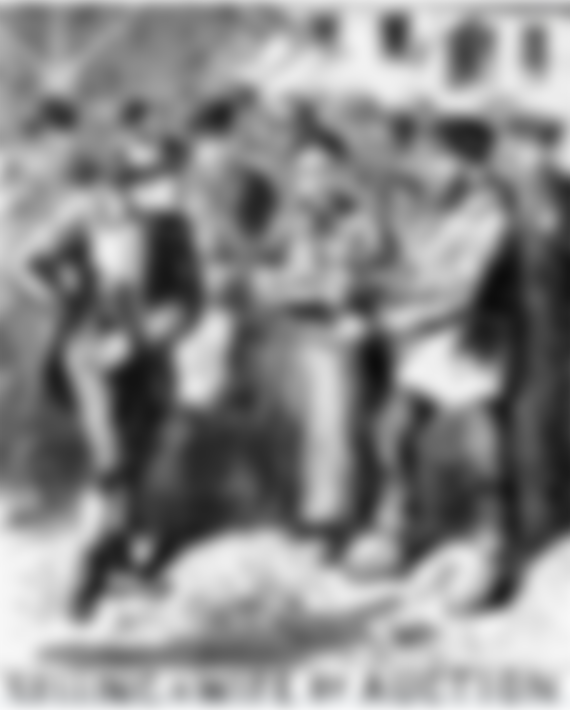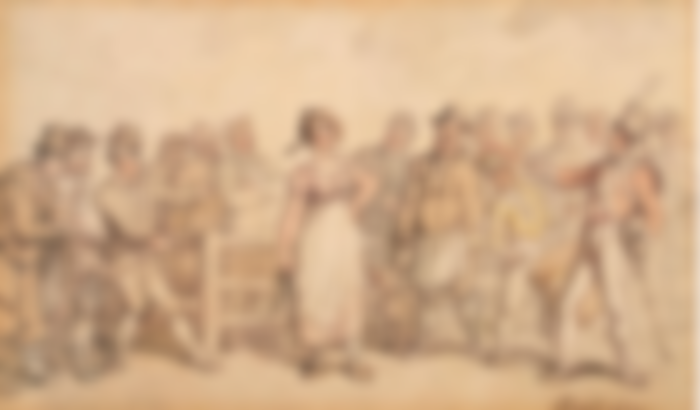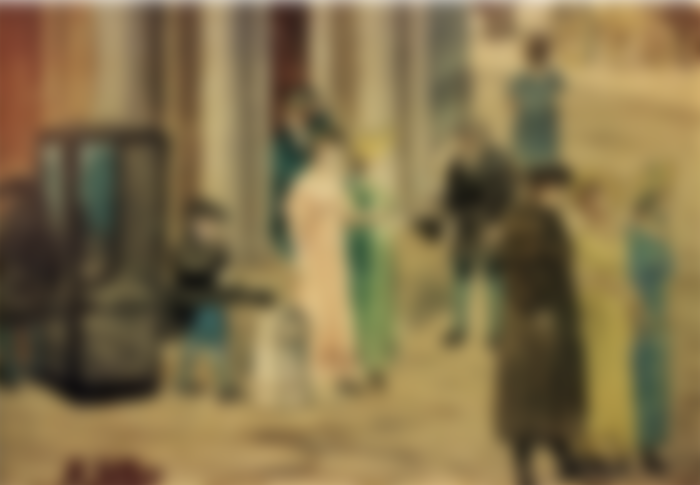Of all the bizarre customs of the past, this one WAS THE MOST TERRIBLE FOR WOMEN and was valid in ENGLAND UNTIL THE 20TH CENTURY.
At the time of the Industrial Revolution in England, there were many unhappy marriages, but divorce was a long and expensive process, not available to the lower classes. So he invented a new tradition: to sell his wife. This concept was implemented until the mid-1700s and became popular in the 19th century. It was not a formal procedure, and in fact the marriage was not legally dissolved. Most local judges were willing to turn a blind eye to cases where a husband and wife agreed to a sale. In addition, women are sometimes put up for auction and sold to those who pay the most.
The procedure itself went something like this:

A tall bearded man enters the scene, with a bottle of rum in one hand while holding a leash in the other. On the leash, provocatively trained and obviously drunk, was his wife. After they got on stage, the auction could start!
This scene, reminiscent of one of the most brutal slave markets, did not take place on the shores of West Africa, nor on any Caribbean island. It is a scene that could be seen in many cities of England, with the phenomenon being documented most often in Birmingham. In 1733, a local magazine in that city wrote one of the first newspaper articles on the subject, although there is no doubt that similar things had happened before.
- Samuel Whitehouse… sold his wife Mary Whitehouse, at an open auction, to Thomas Griffith. The price of one gold coin was paid - the mentioned article read.
In the continuation of the article, it is written that Mr. Griffiths undertakes to "take Mary with all her flaws". We do not know how Mr. Griffiths came to terms with his shortcomings, but the article claims that after the work was done, a drunken party ensued, at which the new groom and the ex-husband treated each other.

Although they seem surreal at first glance, such scenes were not uncommon in medieval England, as one institution common to them today was inaccessible to them. Namely, divorce was one of the most complicated procedures in the Middle Ages, and also very expensive.
While members of the upper class engaged in divorce litigation relatively often, because they themselves were rarely associated with property transactions, the poorer strata found their version of divorce - by selling their wives!

The earliest written traces of the English custom of selling women publicly date back to the end of the 17th century, and there has long been a debate about the legal basis for such manifestations. There was a strong current that considered the matter illegal and tried to stop this inhumane custom.
Sales apologists, on the other hand, put English law for the poor at the forefront, which allowed such sales under certain conditions. It seems that in fact the most important thing is anything that dictates real life.
While there are no written traces left of how the women themselves viewed the auction process, it is characteristic that the women sold in most of the many paintings and drawings describing such events are painted smiling, behaving as if they were having fun. , and even challenge those gathered to offer as much as possible. The authors of these drawings, however, are one hundred percent men…
How did the women themselves view this custom?

It is certain that those who were more practical saw in him the possibility of coming out of a bad marriage, which was an unfulfilled dream for many Europeans of that time.
Although the sales were in the form of an auction, they were often, in fact, arranged in advance, and the woman was formally "sold" to a person with whom she was already in a relationship. The written traces that remain most often say that the sold women had a positive attitude towards this custom, although this should be taken with a grain of salt.
Although this was a custom that was carried out exclusively among the lowest strata of the population of the 18th, and especially the 19th century, it was considered obligatory to stand in the way of such barbarism. As the number of such "sales" increased, so did the resistance to this type of event.
We find one of the first cases of public resistance in 1756, when women in Dublin stopped the auction, "liberated" the woman who was being sold, and tied her husband in chains. Although the husband was released the next day, after spending the night tied up in the square, from this example we can see that the public still viewed the custom negatively.
In London itself, in 1806, a worker tried to sell his wife at one of the city markets. Newspaper reports say that "after realizing the worker's intention, the citizens first protested and then physically attacked him, and it would have ended with the hanging of the husband if the police had not intervened."

As the British Empire became an increasingly orderly state, so did the custom of selling a wife. The ban was never passed, but the matter changed when the state authorities began to punish and ban such actions, from which they had turned their eyes until then.
After there were other examples of women being sold for everything you can imagine, from “a lump of gold as big as a fist” to a mug of beer or a few chickens, it wasn’t until the twentieth century that the English broke with this custom.





That is really bizarre